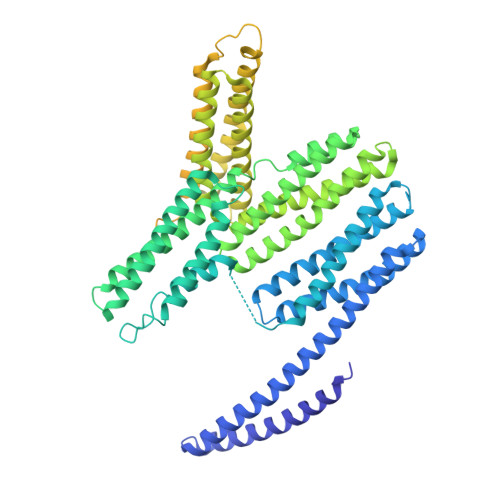Binding partner- and force-promoted changes in alpha E-catenin conformation probed by native cysteine labeling.
Terekhova, K., Pokutta, S., Kee, Y.S., Li, J., Tajkhorshid, E., Fuller, G., Dunn, A.R., Weis, W.I.(2019) Sci Rep 9: 15375-15375
- PubMed: 31653927
- DOI: https://doi.org/10.1038/s41598-019-51816-3
- Primary Citation of Related Structures:
6O3E - PubMed Abstract:
Adherens Junctions (AJs) are cell-cell adhesion complexes that sense and propagate mechanical forces by coupling cadherins to the actin cytoskeleton via β-catenin and the F-actin binding protein αE-catenin. When subjected to mechanical force, the cadherin•catenin complex can tightly link to F-actin through αE-catenin, and also recruits the F-actin-binding protein vinculin. In this study, labeling of native cysteines combined with mass spectrometry revealed conformational changes in αE-catenin upon binding to the E-cadherin•β-catenin complex, vinculin and F-actin. A method to apply physiologically meaningful forces in solution revealed force-induced conformational changes in αE-catenin when bound to F-actin. Comparisons of wild-type αE-catenin and a mutant with enhanced vinculin affinity using cysteine labeling and isothermal titration calorimetry provide evidence for allosteric coupling of the N-terminal β-catenin-binding and the middle (M) vinculin-binding domain of αE-catenin. Cysteine labeling also revealed possible crosstalk between the actin-binding domain and the rest of the protein. The data provide insight into how binding partners and mechanical stress can regulate the conformation of full-length αE-catenin, and identify the M domain as a key transmitter of conformational changes.
Organizational Affiliation:
Departments of Structural Biology and Molecular & Cellular Physiology, Stanford University School of Medicine, Stanford, CA, 94305, USA.














